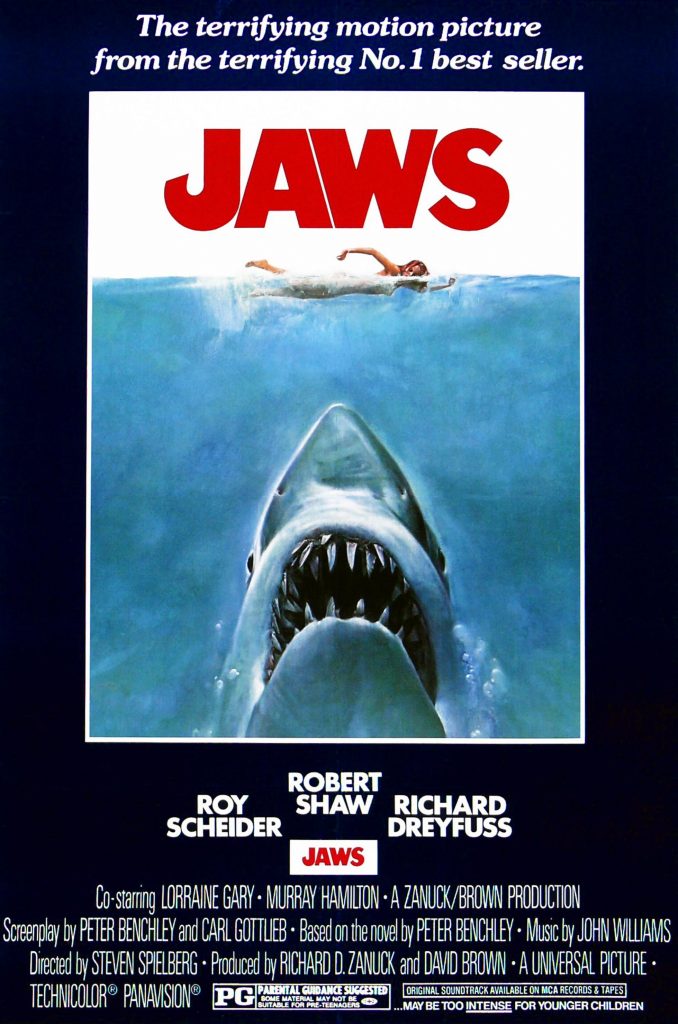It’s still not safe to go back in the water, or at least we think it’s not. That brand of terror—fearing what we can’t see—is the reason Steven Spielberg’s groundbreaking thriller, Jaws, has endured for 50 years. To mark the anniversary, the Academy Museum of Motion Pictures will open “Jaws: The Exhibition” on September 14. It’s billed as the largest-ever showcase dedicated to the film, which redefined summer blockbusters.
The display, which also marks the Los Angeles museum’s first extensive show dedicated to a single film, is on view through July 26, 2026.
Spanning seven galleries in the museum’s Marilyn and Jeffrey Katzenberg Gallery, the exhibition features over 200 objects pulled from Spielberg’s personal collection, the NBCUniversal Archives and the Academy Collection. Interactive experiences and behind-the-scenes stories help bring the exhibition to life.
A Severed Head and Mechanical Shark Help Tell The Story
The exhibition recreates key moments from the film, including the severed head of shark victim Ben Gardner, a local fisherman on Amity Island, where the action is set. With its missing eye, the prop helped create a masterful jump scare in the film. Other notable items include Hooper’s shark cage, components of the fishing boat, “Orca,” Spielberg’s annotated script, handwritten materials by composer John Williams and the original Jaws clapper board.
The exhibition follows the three-act structure found in many films, which includes Jaws (the movie earned three Academy Awards and was nominated for Best Picture). There are six narrative sections: “The Unseen Danger,” “Amity Island Welcomes You,” “Sunday at the Beach,” “The Shark’s Rampage,” “Adventure Ahead,” and “Into the Deep.” A seventh gallery explores the film’s lasting impact.
Behind-the-scenes photographs capture the controlled chaos of the Martha’s Vineyard shoot, where a malfunctioning shark, nicknamed Bruce, nearly derailed the production. The 25-foot shark has hung above the main escalators of the museum since it opened in 2021.
Photos of Spielberg and the cast and crew on the Jaws set are on display, as well as shots of the mechanical shark as it was being constructed. There is also an actual mechanical shark that visitors can manipulate, albeit a scale replica. Perhaps most rare: Super 8 footage shot by Spielberg during filming.
The exhibit opens with a 4K screening of the original film on September 14. The event is sold out, but standby tickets are available on-site.
The Academy Store has also launched a line of Jaws-inspired merchandise that includes posters, t-shirts, hoodies, a replica of the Amity Island billboard and “The Game of Jaws” 50th anniversary edition. Players are tasked with retrieving various items (anchor, tire, boot, grenade, etc.) from a shark’s belly before its jaws snap down—on a spear, not one’s hand.
‘The Jaws Effect’
Jaws returned to theaters this Labor Day weekend, ranking second in box office draws, and amassing nearly $10 million, according to Forbes.
But the movie’s influence has extended far beyond theaters, creating “The Jaws Effect,” a disproportionate and irrational fear of sharks. In 2014, a review of a decade-plus of Western Australian government policy found that Jaws influenced its stance on sharks.
“In particular, the Western Australian Government’s current ‘Imminent Threat’ policy to catch and kill ‘rogue’ sharks is predicated on Hollywood fiction,” wrote Dr. Christopher Neff, a professor at the University of Sydney.
After Jaws, sharks were largely transformed into what some have called “cinematic monsters” and “mindless eating machines.” Scientists and conservationists have worked to counter the fear.
“With its innovative storytelling, Jaws changed popular culture and film history in ways that are still reverberating,” says Academy Museum director and president Amy Homma.
Indeed, Jaws took a bite out of the psyches of moviegoers worldwide. The exhibit showcases promotional materials that demonstrate the film’s global impact. They include “Jaws Feeding Time” cereal boxes, toys and other merchandise. Along with the mechanical shark, there’s an “Amity Island Welcomes You” billboard and orange-and-white beach cabanas.
What does Spielberg think about the exhibition? He said it’s “awesome,” according to press materials. “Every room has the minutiae of how this picture came together and it proves how this motion picture industry is really, truly a collaborative art form.”
In 2028, the Academy Museum will further honor Spielberg by mounting a retrospective exhibition of the filmmaker’s career.

